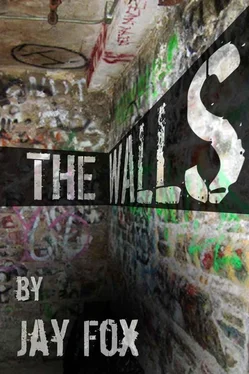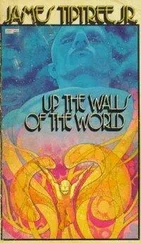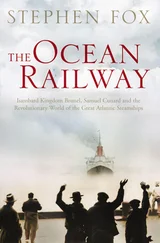Without question, Park Slope retains Coprolalia's pieces the longest. This is not surprising by any means if one knows the idiosyncrasies of the area, but it does go against the general trend that I have seen in other areas like the Slope. Neighborhoods that have recently “come up” over the past decade or so are often reluctant to keep a Coprolalia. Some owners wish to prove the area's nascent respectability, and consequently despise the artist to the extent that one is liable to be asked to vacate the premises with a firm grip around the shoulder if the artist's name is even uttered. Others wish to embrace the former edginess of their neighborhood. They clutch tightly to this past, sometimes under the belief that the streets have been largely uncontaminated by condo barons and the more bohemian I-Bankers and trust-funders in possession of enough dough to actually live in the monstrosities created by the former. It's a proactive form of denial. Cobble Hill, Carroll Gardens, and Boerum Hill are similar in this respect. At one place on Smith Street, the main drag for the three neighborhoods just mentioned, the Coprolalia installation has actually been quarantined off by four pieces of duct-tape that the owner evidently put up herself.
It goes without saying that I still have yet to discover a pattern. Even if he time-stamped all of his work, it would seem impossible to track him down. Still, I have been attempting to recreate his nights. I ask the staff at each location when they first noticed that there was something in their midst that could potentially be a Coprolalia. Most say that they don't pay much attention. I emphasize the point that I'm not looking for exact figures, that I simply need a compass. Sometimes I get a day, sometimes a weekend, sometimes just a month. It seems preposterous that a man would so diligently obfuscate the time or date he visited a bar, but this seems to be yet another one of Coprolalia's hobbies.
Here's a specific example. According to my sources, Coprolalia hit eight locations over the course of a weekend in mid-April: three in Manhattan (East Village, Lower East Side, Morningside Heights), four in Brooklyn (Carroll Gardens, Park Slope, Greenpoint, Clinton Hill), and one in Queens (Astoria). Three of the pieces, the ones in Morningside Heights, Park Slope, and Astoria were discerned relatively quickly; of the other five pieces, no one is willing to commit to a day, let alone a time. The staff at the Park Slope tavern is certain that Coprolalia was in the bar after seven and prior to nine on Friday. As the size of the piece in Astoria makes it virtually impossible to miss, several members of the staff are more than confident that it appeared between the hours of ten and one on Friday night. The window in which the Morningside installation appeared is wider; the bartender with whom I spoke is certain that the artist came in during his shift, which began at eight and ended at four on the same night. If this information is accurate, I can generate a rough time-line of Coprolalia's travels for the night, provided, of course, these were the only three destinations in his itinerary.
Coprolalia enters the Park Slope tavern sometime during happy hour. It is busy enough so that no one notices him, but slow enough so that he runs a relatively low risk of being interrupted or hurried while creating the piece entitled Herculi Romano Augusto . It is one of the rare cases in which Coprolalia has provided a title, though Sean is absolutely confounded by its meaning. He only knows that “Herculi Romano Augusto” was one of the many honorifics the emperor Commodus bestowed upon himself. Coprolalia must leave this establishment after seven, but prior to nine in the evening, but it is difficult to say the direction in which he goes. The itinerary splits into two scenarios, though in both he begins at the Union Street R train, as it is the closest station to the bar. In the first scenario he transfers to the 2 or 3 train at Atlantic, transfers again to the 1 (the local), probably at 96 thStreet in Manhattan, and then gets out at the 110 thStreet stop. This trip takes him between forty-five minutes and an hour and fifteen minutes, thereby meaning he arrives at the bar in Morningside Heights sometime between eight or so and ten-fifteen. It is there that he creates what has been dubbed Glass Onion , a title that Sean created because he thinks it to be a reference to the Beatles song of the same name. At the earliest, Coprolalia gets back on the train at eight-thirty. He then travels south via the 1, transfers to either the 2 or the 3 train, transfers again to the N or the W train at Times Square, and then proceeds into Astoria (or he could have taken a different train, the 7, say, to Queens Plaza where he transfers to either the N or the W). Taking into account that it is no longer rush hour, the trip has to take him close to an hour, if not longer. Also, the bar is not particularly close to the train, meaning that he has to spend at least fifteen minutes walking in order to get there. This places him in the final bar in Astoria, at the earliest, sometime around quarter to ten. He then performs his work, which has to take a substantial amount of time because — as has been established — the piece is atypically large. As the staff is certain that the piece appeared after ten, it is possible that he began his work shortly after arriving, and that it took half an hour to produce. It is also possible that Coprolalia took his time, that he left Morningside Heights as late as eleven or eleven-thirty, and that he arrived in Astoria well after midnight. End scenario one.
In scenario two, Coprolalia takes the R train from Union to Atlantic, but transfers to the N as opposed to the 2 or 3. Although a straight shot to Astoria, the ride on the N takes over an hour. Add the fifteen minutes it takes him to walk from the train station to the bar, as well as a minimum of fifteen minutes required to get from the bar in Park Slope to Atlantic, and you arrive at a total travel time of somewhere between an hour and a half and two hours. This means he can leave the bar in Park Slope at seven, arrive at the establishment in Astoria by nine, create Procession/Regression (another title provided by Sean), and then make it into Morningside Heights by eleven or so to produce Glass Onion .
Both patterns are feasible. Either way you cut it, however, neither scenario makes any rational sense. I'll venture to say that, on rare occasions, New Yorkers may visit three neighborhoods in a night. I'll even admit that there have been cases in which people have managed to go to the three neighborhoods I have mentioned above within a few hours. They would only do so, however, if they satisfied one of two conditions: they have three very important events that unfortunately fall on the same day, or they own a car. Because the serpentine path tediously articulated above is the norm rather than the exception for Coprolalia's travels, this leads me to believe that he is not confined to the lines on the Map. He most certainly owns a car.
As I go over my notes, now with a cup of hot coffee that emits no steam in my hand, I begin to create new patterns, patterns that may or may not exist. There's a large map of each borough of the city, save Staten Island, on the wall in the living room. I also have a smaller map that, paradoxically, contains all five boroughs. On the larger maps, each confirmed Coprolalia is represented by a thumbtack. On the smaller map are eight thumbtacks, each one corresponding to one of the bars mentioned above. Something emerges.
The most rational route from Park Slope to Astoria, by car, would be to take the Brooklyn-Queens Expressway to the Grand Central Parkway. In fact, the bar in Astoria is only a block or two away from an off ramp. Furthermore, if one were to drive from Park Slope to the B.Q.E., it would be quickest to cut through Gowanus and into Carroll Gardens; and if one were to take the B.Q.E. from Park Slope to Astoria, it would be necessary to drive past Clinton Hill and Greenpoint. This means that the only locations that appear to be random, provided there was a specified plan to go from Park Slope to Astoria, are the ones in Manhattan. But look here. The Grand Central Parkway leads to the Triborough Bridge, which connects Queens to the Bronx and Manhattan. In fact, if one wanted to avoid Manhattan traffic when going from Park Slope to Morningside, the best route would be the B.Q.E. to the Grand Central and over the Triborough. This explains seven out of the nine. Perhaps the other two appeared the following night.
Читать дальше










